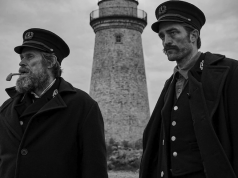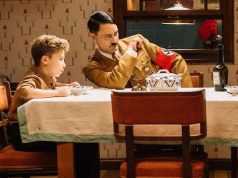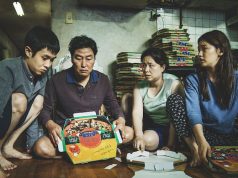From the dark underground of film festivals like Screamfest and Slamdance comes “Paranormal Activity,” a low-budget horror flick that uses its do-it-yourself aesthetic to great advantage in scaring the pee out of viewers. Rather than building elaborate (and expensive) sets or relying on horrifying (and expensive) special effects, first-time filmmaker Oren Peli simply shot the whole thing in his own house, an ordinary, un-scary three-bedroom home that could easily be my house, or your house, or anyone’s house. Ergo, the terrifying things that happen here could also happen … well … you see where I’m going with this. Good luck sleeping tonight!
Like “The Blair Witch Project” or “Cloverfield,” “Paranormal Activity” purports to be documentary footage shot by its subjects, in this case a young couple named Micah Sloat and Katie Featherston, played by actors of the same names. The “engaged to be engaged” pair has been experiencing unusual sights and sounds at night, and Micah has bought a video camera to try to capture whatever it is on tape. (Those who were made queasy by the other films I mentioned will be glad to know that Micah has a steady hand when he carries the camera, and he sets it on a tripod or other stationary object much of the time.)
Katie takes the whole thing more seriously than her boyfriend does, having been plagued by these phenomena off and on since she was 8 years old. Micah’s approach is more practical: We’re going to film everything, we’re going to analyze the recordings, and we’re going to put a stop to this. Before too long, he’s scared enough to stop cracking jokes about Ouija boards and psychics.
And that’s the premise — simple and elegant and ripe with possibilities, which Peli explores to a highly satisfying and bone-chilling degree. Everything in the film was shot by the characters, which means you’ll need to get over the impulse to wonder why they keep filming even when things turn scary. And Peli lets the suspense build slowly and gradually to its terrifying crescendo, so impatient types beware.
The crucial scenes are the ones at night, with the couple asleep in bed, a small light left on in the corner so the camera can capture whatever happens. Upstage is the bedroom door, left open to permit us a view of the dark hallway beyond it. The camera is motionless, of course, so there’s nothing directing our attention to any particular part of the screen. If something alarming occurs, it could come from anywhere within the frame, and at any moment. The tension is often unbearable, and it’s not much of a relief when the anticipation is over and the real fright kicks in.
The daytime scenes, which help regulate the pace of the film so it’s not constantly operating at maximum capacity (this is good for your heart, too), are by necessity less compelling than the nighttime ones, and there comes a point where you might wish we could omit them and just stick to the good stuff. The film needs them, though, and the two actors — this is essentially a two-person story — have a natural chemistry and rapport that bolsters the film’s believability. That’s crucial, too, of course. What happens to them could happen to you. I sure hope it doesn’t, though, for your sake.
B+ (1 hr., 26 min.; )





